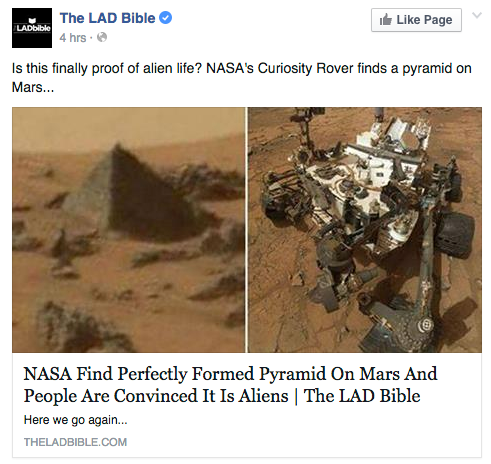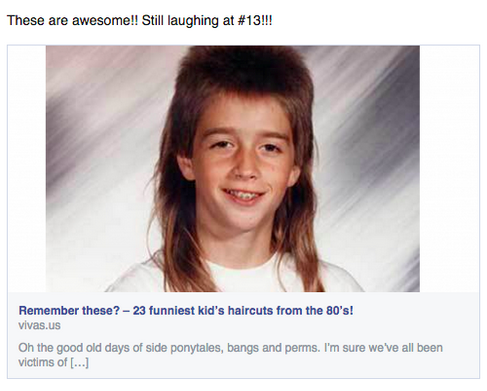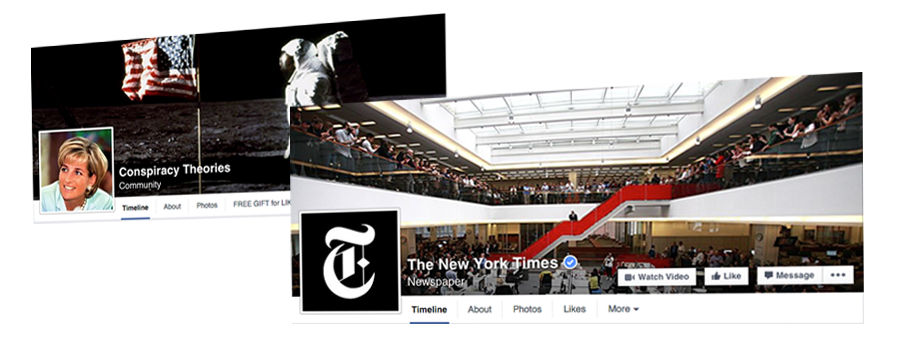One of the top questions publishers struggle to answer satisfactorily is “Does more engagement mean more clickthroughs?” We have seen that the answer to this is yes, although it isn’t always reflected in the data clearly enough. In this post I’ll explain how social media engagement eventually does lead to greater exposure and inevitably greater clickthrough numbers.
When we compare Facebook presences of publishers we look primarily at engagement. But we also see a wide variation in how popular stories are on social media vs. how many clickthroughs to the story they produce. It’s almost never something that can be predicted accurately when looking at a single post in isolation.

However, when looking across bigger selections of data, at multiple posts from the same publisher, we start to get an idea of averages. The problem with averages is that they can be misleading. With the data we have from publishers, we can average out click vs engagement results and produce per post predictions on numbers of clickthroughs related to a story. The greater the amount of historical data, the better the prediction will be. BUT, if we point to a prediction that says for example Story A should produce 5000 clicks based on engagement, and a publisher sees that the real number of clicks was only 1000, the prediction looks hugely inaccurate (one reason we don’t do it). The problem here is that looking over a small selection of articles and trying to predict individual posts is always prone to being inaccurate.
It seems obvious (it is obvious), but stories are not created equal when it comes to generating clicks. In one case, the Facebook post itself can tell almost the full story without requiring a click, while others are much more productive in terms of generating click traffic. So does that mean publishers should identify the ‘most clickable’ article and focus on them? No! For two reasons – 1: Just because someone doesn’t click doesn’t mean they are not engaging. More engagement means more exposure in future to that publisher’s posts. I’ll come to why that is after telling you about reason number 2: Trying to make everything clickable lies the deep dark rabbit hole of producing clickbait.
This post is a great example of the clickbait style:

Now this post will encourage clicks, but these are short term gains at the expense of long term trust. A user will tend to behave in the following way when presented with the above post:
Ignore it totally, OR
Click on it
Try to locate style number 13 – as recommended in the caption
Realise that they have to click several times to get to it and give up OR
See number 13, likely be disappointed and then click away
Why will they be disappointed? This is to do with what you are promising the reader in return for their attention. Even if you have a video of something awesome happening and you label it “Watch this awesome thing happen”, the viewer sees it, agrees it is awesome – yet the result is that their expectations were merely met. Not a negative, but a neutral. However in most cases, awesomeness is subjective. One man’s awesome is another man’s merely average. In the post above, maybe haircut #8 was the funniest one to a given reader, but simply by pointing out that #13 is the ‘one to check out’, you are devaluing the others in the list.
From the data we’ve processed, the superior strategy is to point out honestly and modestly what the reader can expect from the story. If you entitle a post “See this bus fall through a roof.” it scarcely matters how bad the footage is. As long as the video contains a bus falling through a roof, the viewer’s expectations are met. The likelihood is that this act will exceed the viewer’s expectations, meaning they feel good for having clicked it, that it was worth their time – meaning they’ll be much more likely to:
Share the story themselves – valuable organic/viral reach
Trust the publisher a tiny bit more. The next time a story appears from that publisher they will be more inclined to click on it or at least pay it attention.
In the picture below is a real life example of poor quality footage that did not disappoint viewers. Posts featuring this footage did not exaggerate the content, which is understandable given the nature of it.

Trust is essential when building a healthy online presence on social media. It’s easy to lose and tough to build up, so it’s an asset that every publisher must vigourously defend. In the long term then, clickbait and misrepresentation of content can be hugely damaging to your overall social media presence.
The engagement/clickthough link.
So how then, do posts that don’t individually generate a big ratio of clicks help increase the traffic contribution from social media? The answer lies in how the Facebook algorithm ranks publishers. Each individual story carries a certain weight within Facebook – something that is reassessed continually inside of the FB algorithm. If a story is generating a lot of Facebook activity, then it will in turn be shown to more people. In effect, the more popular a post is, the more important or valuable each share, comment, like or click becomes in the eyes of the algorithm. This activity is also attributed to the page that posted the original story, which increases that page’s importance or weighting within the Facebook algorithm. Given the choice of showing you a story from one of the following pages, it’s much more likely you’ll see the one from the NYT.

A page that makes many posts that generate a lot of engagement each will be considered more important by Facebook and its posts will be shown to more people than a page with the same number of page fans that is not producing such engaging content. Each one of those posts is helping to drag up the average initial reach of the page.
What is initial reach?
Initial reach is how many people Facebook decides to serve the post to regardless of engagement on the post. For brands this tends towards 1% and for publishers up nearer 10%. If Publisher X with 100,000 fans posts accidentally a bunch of nonsensical letters and numbers, it’s going to be seen by a lot of people. Even if they delete it, FB will serve it to those people, (so don’t let the office cat near the keyboard.)

Photos and videos don’t drive traffic, but they contribute to the popularity and importance of the page – they help drive up the initial reach, so that when the publisher posts a link to an article, more Facebook users will see it. The exact same principle applies to articles that generate engagement but don’t individually yield a large number of clicks. If Facebook users like it and engage with it, then it’s helping future stories posted by the same publisher achieve more clicks and more initial, organic and viral reach than they may have been able to generate if the publisher had chosen only to post ‘click friendly’ articles.
As a publisher – you want people to click on your articles of course, but instead of aiming for clickbait, you should be doing two things – recognising ‘click-friendly’ articles and continue posting ‘engagement-friendly’ articles that don’t necessarily directly contribute to clicks as much. They are helping improve your figures beyond the short term spikes in engagement, so trying to clamp down on ‘underachieving’ posts based only on click performance may damage overall return from social media.
What we commonly see with publishers is a delay between engagement rising and clickthroughs rising, but why is this?
Looking at user behaviour we see that the first ‘wave’ of increased engagement on a publisher’s Facebook page tends to come from users who are already active. They are essentially your ‘existing readers’ and rather than increasing traffic overall, will simply move from consuming via the website to consuming via social media. Building up engagement levels with these people on social media transforms them from readers to sharers – even if they don’t actively share articles. Simply by having them active on Facebook, you are increasing the reach of your posts. As the Facebook algorithm does its job, people exposed to your a publisher’s posts and articles increases beyond the sphere of your ‘existing readers’ and opening up a new audience that will discover you via social media.
One reason this is so important (and so effective) on social media as opposed to acquiring new readers through traditional digital marketing is that stories in social media are presented hand in hand with the existing reader’s approval. New readers actually have a 3-4x higher clickthrough rate than readers who see the story direct from the publisher. The level of trust the Facebook users have in their close circle of Facebook friends is very high, so they are more likely to read stories about subjects that are beyond their core interests and they would otherwise ignore.
In summary: Engagement is the key to reaching new users via friends on Facebook. As long as you aren’t posting misleading content, clickbait style articles or articles that misrepresent what you offer as a publisher, Facebook engagement leads to greater exposure to an audience that is more willing to click on your articles over the medium to long term.

